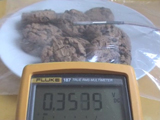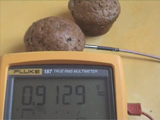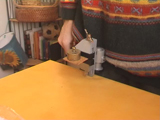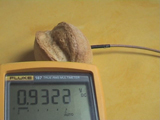Question 8
Where should one store a soft cake, crunchy cookies, or a fresh bun with a crunchy crust in order to keep them fresh and crunchy for as long as possible: in
Help: What happens when one leaves these items open in a room for a couple of days? Why does this happen? Answer: Crunchy cookies lose a lot of water during baking so that they contain less water than they would in equilibrium with typical indoor humidity (40-70% rh) (see movies sensor introduction and cookies). If we leave the cookies in contact with ambient air, then the cookies take up water until equilibrium is reached. As a consequence, the cookies loose their crunchiness and become soft. The opposite applies to the soft cake. Their dough contained so much liquid that even the fully baked cake has more water in it than it should in equilibrium with indoor air (see movie inside a muffin). Hence, a soft cake dries out and becomes hard when left out in the open. So, it is obvious that both, the soft cake and the cookies, should be stored in an air-tight container (this can be a tin can, a plastic box or a plastic bag). Of course, the soft cake and the cookies should not be stored together! See movie a cookie and a muffin. The situation with the bun is more complex. From the first part of this answer it should be clear that the bun itself is not in equilibrium with the ambient air with respect to water. The soft inner part contains more water and the crust contains less water than the water concentrations in equilibrium with the ambient air environment. See movie inside a bun. |
|
Download this page as a pdf







 Movie:
Movie: 


